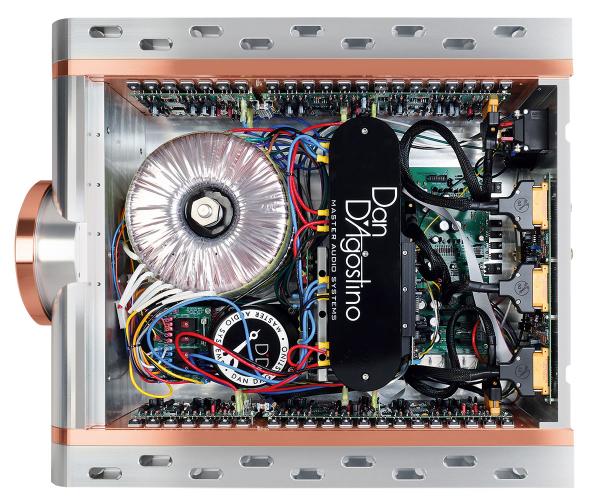D'Agostino Relentless 800 Page 2

New Romantic
Having compared differently rated D’Agostino models in the past, eg, two Momentum amplifiers of varied ratings and mono vs. stereo variants, I know that they are voiced so closely to each other as to be instantly recognisable as ‘D’Agostino’, which is as it should be within any family of audio components. You wouldn’t expect, say, two loudspeakers from the same brand to sound wildly dissimilar. And the same goes for power amplifiers.
The progression of the ‘D’Agostino sound’ over 40-plus years preoccupied my thinking while listening to the ’800, through the same Wilson Alexia Vs [HFN Jan ’23] that I had last heard the original Relentless. Older readers know that Dan was one of the fiercest champions of Class A operation when founding Krell in 1980. He hates distortion, but here it’s as if he’s also reassessed elements of timbre presentation at the frequency extremes. What follows is what I think he’s achieved.
Although I have a long history of hearing a combined D’Agostino/Wilson Audio/Transparent audio chain, there were surprises in store, and they run parallel to the evolution of Wilson speakers under the aegis of Daryl Wilson. Knock me over with a feather, but Dan D’Agostino has discovered sweet, almost romantic top ends. Which makes the name ‘Relentless’ somewhat ironic as aggression plays no part in this amplifier’s behaviour.
Bass Invader
At the same time, the bottom octaves were by some degree more lifelike than I have heard from a solid-state amp since those circa-1980s big Krells. But that’s getting ahead of myself, because the ultimate arbiter of my findings came with the last track I played. Just as the previous two generations of Wilson speakers have traded hyper-forensic detail for more seductive upper registers, and the bass is warmer and more airy, so, too, do those observations apply to the Relentless 800.
It might be a mono track, but The Dave Clark Five’s ‘Glad All Over’, via the remastered version on All The Hits [BMG BMGCAT408CD], exploits bass, maximum levels and transient attack – bass and treble transients. Like a Buddy Rich or Ginger Baker performance, it’s engineered to give the drums prominence and through the D’Agostino amp became a Spectorian wall of sound. My listening took place on a ground floor with no basement nor cavity below, yet the floor still shook. Bass notes travelled up my legs and settled on my chest, each slam so visceral that I understood how subsonic bass could be used as a lethal weapon. It was so loud I even felt my glasses vibrate, and had I not possessed a concern for the welfare of the loudspeakers – although I was assured they could take it – I might have reached my own threshold of pain.
Loud And Clear
Despite this barrage – relentless by name but not by nature – at no time was there any harshness, nor a single whiff of clipping, constraint nor compression. Meanwhile, the non-percussive instruments, especially Denis Payton’s saxophone, enjoyed uncanny positioning. Remember: this was a mono recording yet there was so much depth and such plentiful air around each player that (as with the best systems) the single-channel, dead-centre positioning – instead of room-filling stereo – hardly seemed a sacrifice. It was, in a word, huge.


















































